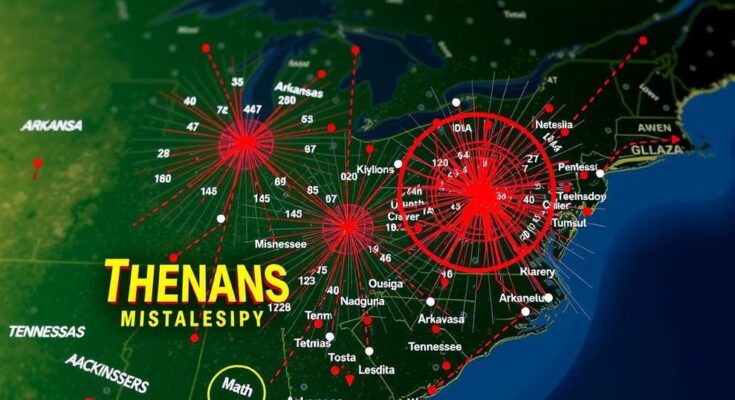On Thanksgiving Day, a series of minor earthquakes rattled Virginia, Mississippi, Tennessee, and Arkansas, with the strongest measuring 2.5 in magnitude in Mississippi. Fortunately, no damage or injuries were reported. However, these tremors raise concerns about preparedness for potentially larger quakes in the historically active New Madrid Seismic Zone, where significant seismic events are expected in the future.
On Thanksgiving Day, the eastern United States experienced a series of minor earthquakes, as reported by the United States Geological Survey (USGS). The most significant tremor measured 2.5 in magnitude and was centered in Mississippi, while nearby states, including Virginia, Tennessee, and Arkansas, reported smaller earthquakes ranging from 1.8 to 2.1 in magnitude. Although some residents experienced shaking or heard a loud noise, there were no reports of damage or injuries associated with these seismic events.
The first earthquake occurred near Louisa, Virginia, just before midnight, followed by the Mississippi quake at 1:48 AM, near Canton. Subsequently, multiple earthquakes struck western Tennessee in a short timeframe, all located within the New Madrid Seismic Zone. The Arkansas quake occurred at around 4:24 AM, also falling within this seismically active area. While these minor tremors did not cause harm, they raise concerns about preparedness for a future significant earthquake in this region.
Authorities emphasize the importance of readiness for a potentially destructive earthquake, particularly given the historical significance of the New Madrid Seismic Zone. This area has witnessed major seismic activity in the past, most notably during the winter of 1811-1812, when a series of powerful earthquakes occurred. The first of these was a catastrophic magnitude 8.1 quake that was felt across a vast region, including cities as far away as New York and Washington, D.C.
During this historic seismic event, the shaking lasted for 1-3 minutes in affected areas, resulting in phenomena such as ground liquefaction and unusual earthquake lights, which were observed as luminescent flashes generated by squeezed quartz crystals. Subsequent quakes in early 1812 further contributed to the intense seismic activity, activating over two thousand aftershocks during that period. Experts warn that a similar situation could occur again, raising critical concerns for the growing population living in this region.
Despite the lack of significant damage from recent events, the potential for a future, more serious earthquake remains. Historical patterns indicate that a large quake in the New Madrid Seismic Zone is not a question of if, but rather when. Given the current population density, a future event could lead to severe consequences, including substantial loss of life and property. Thus, it is essential for residents and officials to prioritize earthquake preparedness to mitigate risks associated with seismic activity.
The New Madrid Seismic Zone, located in the central United States, is a historically significant area of seismic activity. It is most well-known for a series of powerful earthquakes that occurred between 1811 and 1812, which greatly impacted regions near the Mississippi River. This zone remains active today, with the potential for future earthquakes prompting concerns about community preparedness. The recent Thanksgiving Day earthquakes serve as a reminder of the unpredictability of seismic events and the necessity for public awareness and readiness plans to address possible future threats.
In conclusion, the Thanksgiving Day earthquakes in Virginia, Mississippi, Tennessee, and Arkansas, though minor and without damage, highlight the ongoing seismic risks present in the New Madrid Seismic Zone. The zone’s history of major earthquakes underscores the importance of preparedness among residents and local authorities. Given the area’s population growth compared to the early 1800s, future seismic events could pose much greater risks, necessitating immediate attention to disaster readiness measures.
Original Source: weatherboy.com




